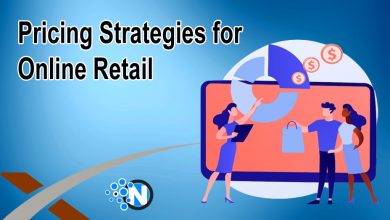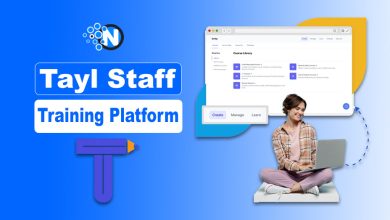10 Proven Tips to Build Customer Loyalty That Lasts

Winning new customers has now become just like the biggest challenge for businesses, but the real success lies in keeping those customers for the long term.
Nowadays, brands can not afford to treat customers as one-time transactions. What truly makes a company stand out is its ability to create meaningful customer relationships, where customers feel recognized, appreciated, and genuinely connected to the brand.
A loyal customer will choose your brand over competitors, even if they have cheaper options, because the bond you’ve built outweighs the cost difference. In this post, I am going to share some effective tips to build customer loyalty.
What is Customer Loyalty?
Customer loyalty refers to the willingness of customers to consistently choose your brand over competitors.
In simple terms, customer loyalty is the bridge between first-time purchases and long-term brand advocacy. It is built on trust, positive experiences, emotional connections, and the value they receive.
A dedicated customer continuously picks a specific brand over its competitors unless it offers excellent customer service and unbeatable product choices.
Why is Customer Loyalty Important?
- Cost Savings: It is much more costly to get new customers than to keep the old customers. Retained customers save the acquisition and marketing expenses.
- Higher Profits: Loyal customers tend to have a higher average order value by spending more on a single purchase and will be more willing to use new products.
- Brand Advocacy: Customers who are satisfied will be brand ambassadors and will spread the good news by word of mouth which cannot be bought through money.
- Resilience In Hard Times: Loyal customers will remain committed to your brand even in bad economic times, out of stock products or errors. Customers trust your business as a precaution.
- Worthy Customer Feedback: Customers over a long-term period are better sources of feedback since they have tried your brand. This assists you in innovating, enhancing and being ahead of the pack.
- Competitive Advantage: Loyalty is an edge in a saturated market. High number of loyal customers ensures that the competitors will find it difficult to steal them, despite intense discounts.
10 Tips to Build Customer Loyalty

1. Personalize the Experience
Nobody likes to feel like another number in a spreadsheet. Customers want to feel noticed. Personalization is how you make that happen.
And you should not worry, it doesn’t mean building a high-tech AI recommendation system (though that’s great if you can). It can be as simple as:
- Using their name in email newsletters instead of a generic “Hello Customer.”
- Recommending items based on past purchases.
- Remembering special dates like birthdays with a surprise discount.
Think of Spotify’s “Wrapped” feature. At the end of the year, they show users a personal breakdown of their most-listened-to songs. It’s fun, it feels special, and people even share it on social media, basically doing free marketing for Spotify.
That’s the magic of personalization: it turns your customers into fans.
2. Recognize and Appreciate Loyalty
Most businesses are so focused on chasing new customers that they forget the ones who’ve been there from the start. And nothing hurts loyalty faster than feeling invisible.
Recognition doesn’t need to be complicated. You can:
- Send a handwritten thank-you card (yes, old school still works).
- Give loyal buyers early access to new launches.
- Drop them a surprise coupon with the subject line: “Because you’re awesome.”
I once read about a bookstore that gave its regular customers free coffee every Friday. Nothing fancy, merely a cup of coffee but the gesture made people come back week after week. It’s not about the cost. It’s about making people feel seen.
3. Build a Referral Program That Feels Worth It
Referrals are gold. People trust recommendations from friends way more than any ad you could run. But you should remember that: your referral program has to be worth it.
The best ones reward both sides.
- Referrer gets something → discount, credit, or even freebies.
- New customer feels welcomed → like getting a discount off their first purchase.
Example? Dropbox grew like crazy because they gave users extra free storage for every referral. Both sides benefited, and the company exploded from thousands of users to millions.
If your program feels exciting and rewarding, customers will happily promote you for free.
4. Deliver Value Beyond the Sale
Most businesses stop caring once the money changes hands. Big mistake. If you really want loyalty, show up for your customers even after the sale.
For instance, if you sale kitchenware. Don’t just send the pan, send recipes too. If you’re a fitness trainer, don’t simply sell the program – check in with clients to ask how they’re doing.
Why does this matter? Because customers notice when you’re invested in their success, not simply your own.
5. Keep Communication Real (Not Just Salesy)
You know what customers hate? Feeling like every message from you is just another sales pitch. Communication should be a two-way street. Instead of spamming inboxes, try this:
- Share behind-the-scenes stories (“Here’s how we designed our latest product”).
- Be transparent about delays or mistakes (customers actually respect honesty).
- Ask for feedback and actually reply when they give it.
During the 2020 shipping chaos, some brands went silent. Others sent updates like, “Hey, your order might be a little late, but here’s why, and here’s what we’re doing to fix it.” Only the brands who communicated, kept their customers happy.
6. Create Loyalty Programs That Feel Like VIP Clubs
A lot of businesses run boring point-based programs: “Spend $1, earn 1 point.” That’s fine, but it doesn’t exactly get people excited.
The best loyalty programs feel like exclusive clubs. They are built on status, perks, and a sense of belonging.
For example:
- Tiered programs (Silver, Gold, Platinum).
- Early access to launches or private sales.
- Experiences like invitations to events, not only discounts.
Sephora’s Beauty Insider program provides its customers not only to earn points but also unlock birthday gifts, VIP events, and higher tiers with more perks. It’s not about discounts, it’s about belonging to something special.
7. Listen to Customers and Prove It
Asking for customer feedback is only half the job. Too many businesses run surveys, collect online reviews, and then… do nothing with them. That’s disappointing for customers because it feels like shouting into the void. If you want loyalty, you have to close the loop and show people that their voices actually matter.
Practical ways to do this:
- Run short surveys.
- Invite reviews and highlight the best ones on your site.
- Respond to complaints quickly and thoughtfully.
Example? Lego has a whole platform called “Lego Ideas” where fans submit designs. If a design gets enough votes, Lego actually makes it into a product. That’s next-level social listening, and it keeps fans loyal for life.
Customers do not just want to be heard, they want to see that their voice makes a difference.
8. Create a Memorable Customer Experience
Want to know a secret? People are often willing to pay more for a better experience.
Do you ever think? Why do so many people line up at Starbucks when they could get cheaper coffee elsewhere? It’s not exactly the drink; it’s the whole vibe, the personalized cups, the consistent experience.
To create that kind of loyalty, focus on things like:
- A smooth checkout process (both online and offline).
- Staff who treat customers with kindness and respect.
- Fast and helpful support when something goes wrong.
Because in the end, people won’t always remember what you sold them, but they will remember how you made them feel.
9. Use Surprise Rewards
Sometimes the little things are what people remember most. If you think that you order shoes online, and along with them comes a free pair of socks. Or you open your email and find a random “Thank You! Here’s 15% Off” code, just because.
This is what a surpise can do. It triggers joy, and customers associate that positive feeling with your brand.
And the best part? Surprises don’t need to cost much. Even a simple handwritten note can make someone smile.
10. Truly Understand Your Customers
At the end of the day, none of these tips work unless you actually know your customers. I don’t just mean their age or location, I mean their problems, values, and motivations.
Some ways to learn more:
- Look at data (purchase history, browsing habits).
- Pay attention to what they say on social media.
- Have real conversations, yes, even old-fashioned phone calls.
When you know what matters to your customers, you can meet their needs before they even ask. That’s how you create loyalty that lasts for years.choosing your company by continuously praising and rewarding loyalty.
Wrapping Up
Customer loyalty is undoubtedly the most compelling controlling factor for clients to return. To achieve economic achievement, you need to build trust and reliability. These are fundamentals for your online business.
The secret lies not in one tactic but in a blend of strategies: personalization, recognition, great communication, value beyond the sale, and experiences that delight. Your loyal customer is rewarded by contributing income to your company and limiting the cost of procuring new ones.
You can frame and keep up your securities with your esteemed customers by now and again and reliably carry out fundamental strategies. Customers will not just remember what you sold them, they will remember how you made them feel.
People Also Ask
What is the main secret to building customer loyalty?
Consistency. Deliver a reliable experience every time, and customers will keep coming back.
How long does it take to build real customer loyalty?
It does not happen overnight, usually months or years of consistent positive experiences.
Can offering discounts alone build loyalty?
No. Discounts attract customers, but loyalty comes from trust, service, and emotional connection.
Do all businesses need a loyalty program?
Not necessarily. A great experience and personal touch can sometimes be more effective than formal programs.
Is customer loyalty different in online vs. offline businesses?
The principles are the same, but online businesses often rely more on personalization and digital engagement.
How do you measure customer loyalty?
Through metrics like repeat purchase rate, Net Promoter Score (NPS), and customer lifetime value (CLV).




